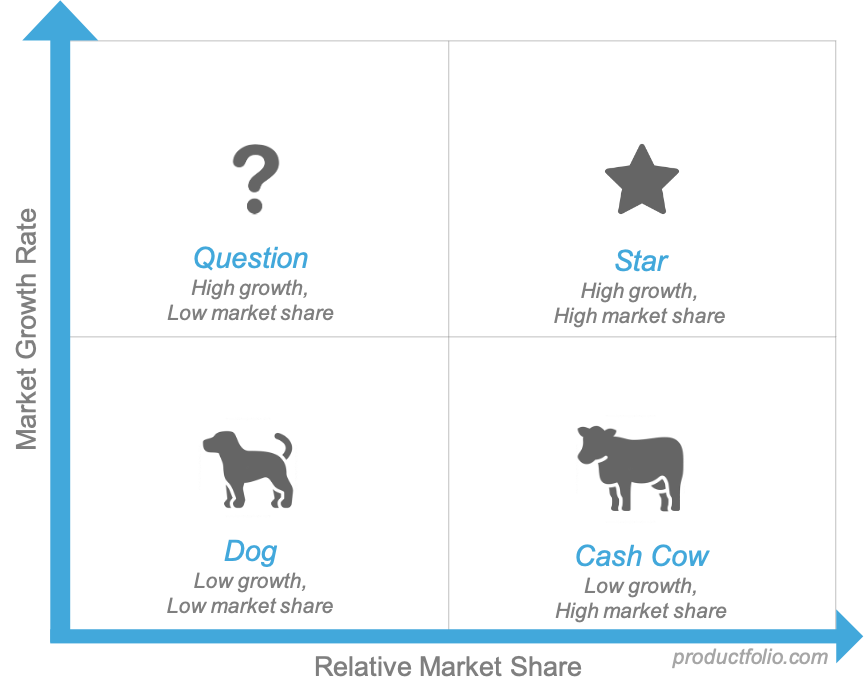What is the Balanced Portfolio?
A balanced portfolio is an investment strategy that is aimed at ensuring the right mix of investments. In a product sense, it is a portfolio that balances new, growing, and mature products, mainly in regard to their growth rates and returns. Successful companies typically have diversified portfolios featuring products having different growth rates and market shares. Why do you need a balanced portfolio and what are the typical product categories that can be in one?

The Need for a Balanced Portfolio
All products do not fall into the same categories. Some are well-established in the market while others are still struggling to establish relevance. You need a mix of these different classes of products because there is hardly any single product that grows indefinitely. A diversified portfolio is often a feature of many successful companies. It has been argued that only organizations which have one that can really make the most of opportunities for growth.
The makeup of a balanced portfolio is a factor of cash flows. Growth and cash-generating potentials of products influence what to include. In other words, the attempt is at striking a balance between the solutions you keep based on growth and returns. High-growth products should receive more investment while low-growth ones ought to generate lots of cash.
The Product Portfolio Matrix
Need some help in achieving a balanced portfolio? The Product Portfolio Matrix, also referred to as the BCG or growth-share matrix, will be useful to you.
This framework provides a clear picture of categories that can feature in a balanced product portfolio. It classifies products as follows:
- Question marks
- Stars
- Cash cows
- Pets or dogs
A product can fall in any of the above categories over its life cycle. What ranks as a “question mark” today can become a “star” or “cash cow” tomorrow.
Below are descriptions of these product categories:
Question marks – Winning products typically start as these. They have yet to start delivering notable benefits to the company but have high growth potential. These products do not yet have a notable market share. They still require more investment and work to become stars. Without sufficient cash inputs, however, they are at risk of not attaining their potential.
Stars – These are products with high growth potentials that have started delivering benefits, including in terms of revenues, cross-selling, or savings. Stars more often than not supply profits. However, like question marks, they require further investment to promote or maintain growth.
Cash cows – Stars may go on to transition to this category. Cash cows are products that generate the most cash for a business. They typically have low growth rates but provide a lot more money than is needed to preserve their market share. Excess cash generated by these products can be invested into pushing products with high growth potential.
Pets – Also known as dogs, this category of products reflects low growth. Not only is their growth rates low or negligible; pets also offer limited benefits to a business. A star or cash cow can go on to become a pet before losing relevance eventually.
An example of a question mark is Apple Watch while the Microsoft Surface is a star, according to Roman Pichler. Coca-Cola, or Coke, is a classic example of a cash cow.
A balanced portfolio is mainly one that features products in the first three categories – pets aren’t essential. It should include question marks that can transition to stars and stars that can take over from declining cash cows.
Best Practices for a Balanced Portfolio
Achieving an effective, balanced portfolio requires diligence. You need to take care to avoid some of the pitfalls that some companies face when managing their product portfolios.
The following are a few best practices to help you get your portfolio management right:
- Approach question marks with caution – Make sure that you do not keep promising products with limited benefits longer than is necessary. If it’s not working, it might not make sense to continue investing more money.
- Don’t be obsessed with stars and cash cows – For obvious reasons, businesses often tend to focus their attention more on products that are generating sizeable cash. They give limited attention to new products and question marks. However, restricting your focus thus promotes an imbalance and leads to a situation whereby you aren’t able to replace stars and, eventually, cash cows. Be intentional about investing in new products.
- Be ready to let pets go – Products in other categories can turn to pets – a question mark can go straight to become one! Do not delay in dropping products that are experiencing a rapid drop in sales and benefits despite all you do. This was what Apple did with its iPod Classic in 2014.


